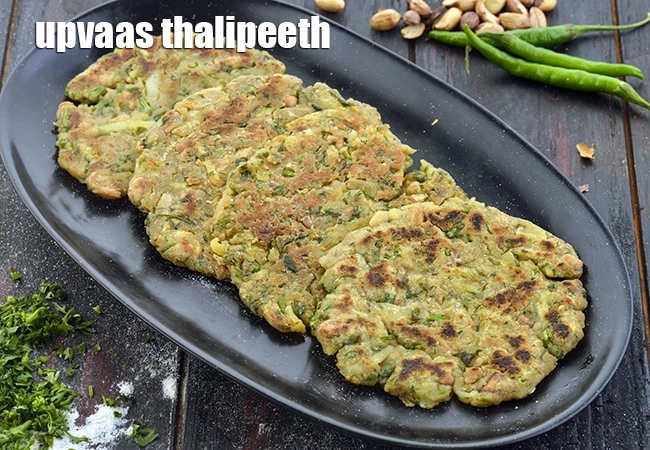rock salt

Table of Content
What is rock salt, sendha namak? glossary | benefits | uses | recipes |
Rock salt, commonly known as Sendha Namak in India, is a naturally occurring, unrefined mineral salt. Unlike common table salt, which is typically mined from underground deposits and then heavily processed, iodized, and bleached, Sendha Namak is minimally processed. It is extracted from ancient salt mines, primarily the Khewra Salt Mine in Pakistan, which is part of the Himalayan salt range. Its distinctive appearance can vary from white to shades of pink, red, or even blue, owing to the presence of various trace minerals like iron, potassium, magnesium, and calcium, which are often absent in highly refined salts.
Across India, Sendha Namak holds immense cultural and religious significance, extending far beyond its culinary uses. It is particularly revered during religious fasting periods (vrat or upvas), such as Navratri, Ekadashi, or Mahashivratri, when regular processed salt is often avoided by devotees adhering to specific dietary restrictions. The belief is that Sendha Namak is a "pure" form of salt, not derived from seawater and untouched by extensive chemical processing, making it suitable for a satvik (pure) diet often followed during these spiritual observances. This tradition has cemented its place in many Indian households as a staple for specific religious occasions.
Beyond its ritualistic importance, Sendha Namak is a versatile ingredient in Indian cuisine. Its unique, milder, and sometimes subtly earthy flavor makes it a preferred choice for various dishes. It's widely used in preparing traditional fasting foods like sabudana khichdi, kuttu ki poori, and various fruit salads. Its distinct taste also lends itself well to everyday cooking, especially in chaats, raitas (yogurt-based dishes), chutneys, and certain vegetable preparations, where its earthy notes can enhance the overall flavor profile without overpowering other spices.
The perceived health benefits of Sendha Namak are a significant reason for its popularity. Ayurveda, the ancient Indian system of medicine, traditionally regards rock salt as superior to common salt, believing it to be beneficial for pacifying all three doshas (Vata, Pitta, Kapha). It is often lauded for its potential to aid digestion, improve metabolism, and help maintain electrolyte balance, particularly crucial during fasting when the body might lose essential minerals. Some also believe it can help in managing blood pressure due to its relatively lower sodium content and higher potassium levels compared to table salt, although moderation is always key.
Furthermore, Sendha Namak's applications extend beyond ingestion. It's often used in various home remedies and wellness practices. For instance, a gargle with warm water mixed with Sendha Namak is a common remedy for sore throats and respiratory issues. Its mineral composition is also thought to be beneficial for skin health, with some using it in exfoliating scrubs or bath salts for detoxification and relaxation. Its natural properties are believed to help cleanse and rejuvenate, contributing to overall well-being.
In conclusion, Sendha Namak, or rock salt, is much more than just a seasoning in India; it's a deeply ingrained cultural element with significant roles in religious practices, traditional cuisine, and holistic health. Its unrefined nature, unique mineral profile, and traditional acceptance during fasting periods have solidified its status as a cherished ingredient. While research continues to explore its full spectrum of benefits, its enduring popularity across Indian households underscores its perceived purity and the diverse ways it contributes to daily life and wellness.
Apart from its culinary and medical uses, rock salt is also sprinkled on roads in cold climates to reduce the freezing point of water thereby preventing ice formation on roads.
Also known as
Sendha namak
How to select rock salt, sendha namak
• Rock salt is a large-grained, unrefined salt. It is advisable to buy clean rock salt from a reputed store because the impurities in rock salt are generally inedible.
• Since India has a very low production of rock salt, the price of this form of salt is very high. It costs almost four times more than common table salt.
• Since it is less salty, one needs to use much more rock salt to get the same taste level as marine salt. So, the cost is higher and quantity needed is also higher—hence it is not very economical.
• So, although it is readily available in stores, it is used mainly during fasts only.
Culinary Uses of rock salt, sendha namak in Indian Cooking
• Rock salt is used as a condiment and preservative in Indian cuisine, especially during fasting days.
kand aloo pakoda recipe | navratri, vrat ka khana | upvas aloo kand pakora | aloo bhajiya for fasting |

• It adds a great flavour to chaats, chutneys, raitas and many other savoury Indian snacks and vegetable preparations.
• Its coarse texture makes it easy to pick up and sprinkle on food during or after cooking.
• Homemade ice-cream recipes often instruct you to sprinkle rock salt on the ice surrounding the cylinder filled with the ice cream mixture. Salt makes ice melt faster, and the resulting salt and water mix freezes at a lower temperature than ice alone. This makes the ice-cream freeze faster.
• Rock salt is also used in Ayurvedic remedies.
upvaas thalipeeth recipe | rajgira faraali thalipeeth | Maharashtrian upvaas thalipeeth |

How to store rock salt, sendha namak
• Store rock salt in an air-tight container; else it will coagulate.
Health benefits of rock salt, sendha namak
Rock salt is less processed and hence it may contain some nutrients like potassium, zinc, magnesium etc. In Ayurveda it is used as a laxative and digestive aid. Some studies have also shown that it does not increase blood pressure, unlike common marine salt. Gargling with rock salt water is also a common remedy for sore throat. However, rock salt may be devoid of iodine, which is found in table salt. Iodine is a key nutrient required for thyroid function and metabolism. Also we do recommend consuming rock salt in limited quantities to avoid any health complications. Further more studies are necessary to prove its health benefits.

Related Glossary
Follow US
Recipe Categories
- Vitamin B12 Cobalamin Rich Recipes 33 recipes
- Low Calorie, Weight Loss Indian Recipes 421 recipes
- Low Cholesterol Indian Recipes 308 recipes
- Healthy Indian Breakfast 373 recipes
- Indian Diabetic recipes 559 recipes
- Indian Pregnancy recipes 461 recipes
- Zero Oil Indian Recipes 133 recipes
- Iron Rich Indian recipes 268 recipes
- Healthy Indian Acidity recipes 137 recipes
- Healthy Sabzis 108 recipes
- Indian Healthy Veg Snack 276 recipes
- Healthy Heart Recipes 415 recipes
- Healthy Veg Indian Soups 74 recipes
- Calcium Rich Indian 373 recipes
- High Blood Pressure Indian Recipes 103 recipes
- Healthy Indian Salads Recipes 137 recipes
- Low Carb Indian Diet, recipes 163 recipes
- Hypothyroidism Diet 63 recipes
- Arthritis Diet 68 recipes
- High Protein Indian recipes 95 recipes
- Vitamin K Diet 42 recipes
- Fatty Liver Diet 39 recipes
- PCOS 136 recipes
- Gluten Free Veg Indian 196 recipes
- High Fiber 328 recipes
- Indian Cancer Patients 275 recipes
- Jaundice Diet 45 recipes
- Sprouts 61 recipes
- Typhoid 43 recipes
- Irritable Bowel Syndrome (IBS) 23 recipes
- Kidney Stone Diet 10 recipes
- Home Remedies 213 recipes
- Senior Citizen 195 recipes
- Healthy Indian Drinks and Juices 213 recipes
- Diet for Dialysis 10 recipes
- Gout Indian Recipes 17 recipes
- Potassium Rich 80 recipes
- Vegan 195 recipes
- Indian recipes to treat Vomiting 8 recipes
- Forever Young Diet, Anti Aging Indian Diet 255 recipes
- Antioxidant Rich Indian 445 recipes
- Vitamin B1 Rich Indian Foods, Recipes 101 recipes
- High in Omega 3 Fatty Acids 32 recipes
- Zinc Rich Foods 55 recipes
- Vitamin A Rich, Beta Carotene, Retinol 89 recipes
- Malaria Diet 19 recipes
- Magnesium Rich 94 recipes
- Healthy Indian Dinner 85 recipes
- Vitamin C Rich Indian recipes 118 recipes
- Low Veg Glycemic Index 86 recipes
- Lower Blood Pressure Salads 8 recipes
- Healthy Indian Lunch Recipes 29 recipes
- Lactation 25 recipes
- Vitamin E Rich 51 recipes
- Hyperthyroidism Diet 47 recipes
- Vitamin B3, Niacin Rich 41 recipes
- Post Surgery Diet 42 recipes
- Selenium 27 recipes
- Phosphorus Rich Indian Recipes, Foods 74 recipes
- Lower Blood Pressure Desserts Sweets 14 recipes
- Copper 15 recipes
- Foods Rich in Vitamin B2 Riboflavin 22 recipes
- Vitamin B6 Diet 36 recipes
- B Vitamins 231 recipes
- Vitamin B9 Rich Folate 50 recipes
- Marathoners, Endurance Athletes, Triathlete 225 recipes
- Manganese Diet 32 recipes
- Thalassemia 18 recipes
- Detox Water, Fruit Infused Water 42 recipes
- Lactose Free Dairy Free 22 recipes
- Omega 6 Fatty Acids 32 recipes
- Phytonutrients 51 recipes
- Chronic Kidney Disease Indian recipes 12 recipes
- Selenium1 0 recipes
- Quick Snacks / Quick Starters 385 recipes
- Quick Breakfast Indian 131 recipes
- Quick Sabzis 117 recipes
- Quick Rotis / Parathas 46 recipes
- Quick Indian Sweets 139 recipes
- Quick Stir-Fries 51 recipes
- Quick Vegetarian Indian Soups 72 recipes
- Quick Chutneys 67 recipes
- Quick Vegetarian Rice, khichdi Recipes 56 recipes
- Indian Snacks Under 10 Minutes (Quick Veg Recipes) 44 recipes
- Quick Indian Dips, Gravies & Sauces 105 recipes
- Quick Veg Indian Pizza 17 recipes
- Quick Veg Pasta 25 recipes
- Quick Pickles / Aachar 25 recipes
- Quick Dals / quick Kadhis 29 recipes
- Snacks under 5 minutes 33 recipes
- Quick Healthy Recipes 43 recipes
- Quick Pressure Cooker 46 recipes
- Quick Desserts 47 recipes
- Quick 3 Ingredients 63 recipes
- Quick Indian Desserts 20 recipes
- Quick 4 Ingredients 41 recipes
- Quick 5 Ingredients 42 recipes
- Kids Tiffin Box 319 recipes
- Recipes for Toddlers (1-3 Years) 32 recipes
- Sweet Recipes for Kids 456 recipes
- Recipes for Baby (10 to 12 Months) 17 recipes
- Quick Indian recipes for Kids 72 recipes
- Indian Breakfast Recipes for Kids 192 recipes
- Recipes for Weaning (8 to 9 months) 22 recipes
- Healthy Foods for Kids 196 recipes
- Snack Recipes for Kids 619 recipes
- Recipes Kids can make 36 recipes
- Kids After School 794 recipes
- Kids Jar Snacks 66 recipes
- Finger Foods for Babies, Toddlers and Kids 76 recipes
- Kids Weight Gain 43 recipes
- Kids Wraps and Rolls 23 recipes
- Kids Veg Pasta 27 recipes
- Kids Brain Boosting 68 recipes
- Protein rich food for kids 71 recipes
- Recipes for Weaning 15 recipes
- Kids Pizzas 30 recipes
- Babies, Toddler and Kids Iron Rich Foods 31 recipes
- High Fiber Foods for Kids 39 recipes
- Kids High Energy Indian Foods 103 recipes
- Kids Noodles 37 recipes
- Kids Calcium Rich Indian recipes 92 recipes
- Babies recipes, 6 to 18 months 34 recipes
- Kids Recipes for Increasing Immunity 10 recipes
- Kids Weight Loss 58 recipes
- Teething Recipes for Babies 10 recipes
- Cereals and Pulses for 8 to 9 months Baby 8 recipes
- Weaning foods at 7 months 12 recipes
- Indian Teen 315 recipes
- Starters / Snacks 2138 recipes
- Indian Breakfast Recipes 819 recipes
- Main Course Recipes 925 recipes
- Indian Salads 385 recipes
- Indian Desserts , Sweets 985 recipes
- Indian Soups 249 recipes
- Indian Beverages, Indian Drinks 483 recipes
- Indian Dinner 903 recipes
- Indian Dinner1 0 recipes
- Indian Lunch 829 recipes
- Side Dishes 449 recipes
- Indian Travel Food 433 recipes
- Indian Barbeque1 recipes 22 recipes
- Frozen Foods, Indian Freezer Recipes 67 recipes
- Whole Wheat Recipes 56 recipes
- Indian Comfort Foods 212 recipes
- Dinner Menus 56 recipes
- Easy Indian Veg 70 recipes
- Innovative Indian Recipes 27 recipes
- No Cook Indian 37 recipes
- Advanced Recipes 10 recipes
- Cakes with Eggs 13 recipes
- Microwave 229 recipes
- Oven 619 recipes
- Indian Steamer Recipes 102 recipes
- Kadai Veg 407 recipes
- Indian Barbeque Recipes 43 recipes
- Sizzler tray 15 recipes
- Mixer 566 recipes
- Pressure Cooker 315 recipes
- Tava 647 recipes
- Non-stick Pan 1393 recipes
- Indian Freezer recipes, meals 57 recipes
- Appe Mould 18 recipes
- Pan 223 recipes
- Non Stick Kadai Veg 203 recipes
- kadai Indian 150 recipes
- Refrigerator 176 recipes
- Waffle Indian recipes 6 recipes
- Handi 12 recipes
- Juicer and Hopper 65 recipes
- Grill 31 recipes
- Toaster 21 recipes
- Gas Toaster 8 recipes
- Steam 72 recipes
- No Cooking Veg Indian 335 recipes
- Vegetarian baked Indian recipes 380 recipes
- Boiled Indian recipes 129 recipes
- Deep Fry 260 recipes
- Indian Tawa 265 recipes
- Shallow Fry Indian 25 recipes
- Microwave1 172 recipes
- Saute 273 recipes
- Indian Pressure Cooker 171 recipes
- Stir-fry 101 recipes
- Roasting 0 recipes

















